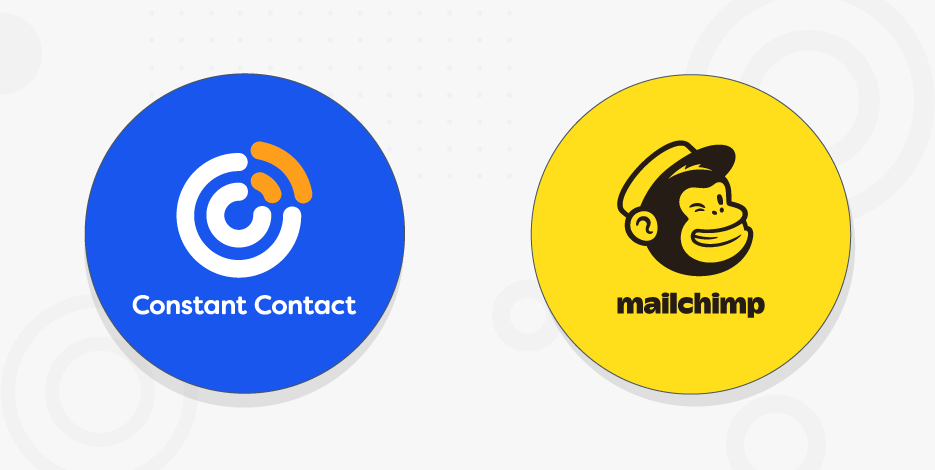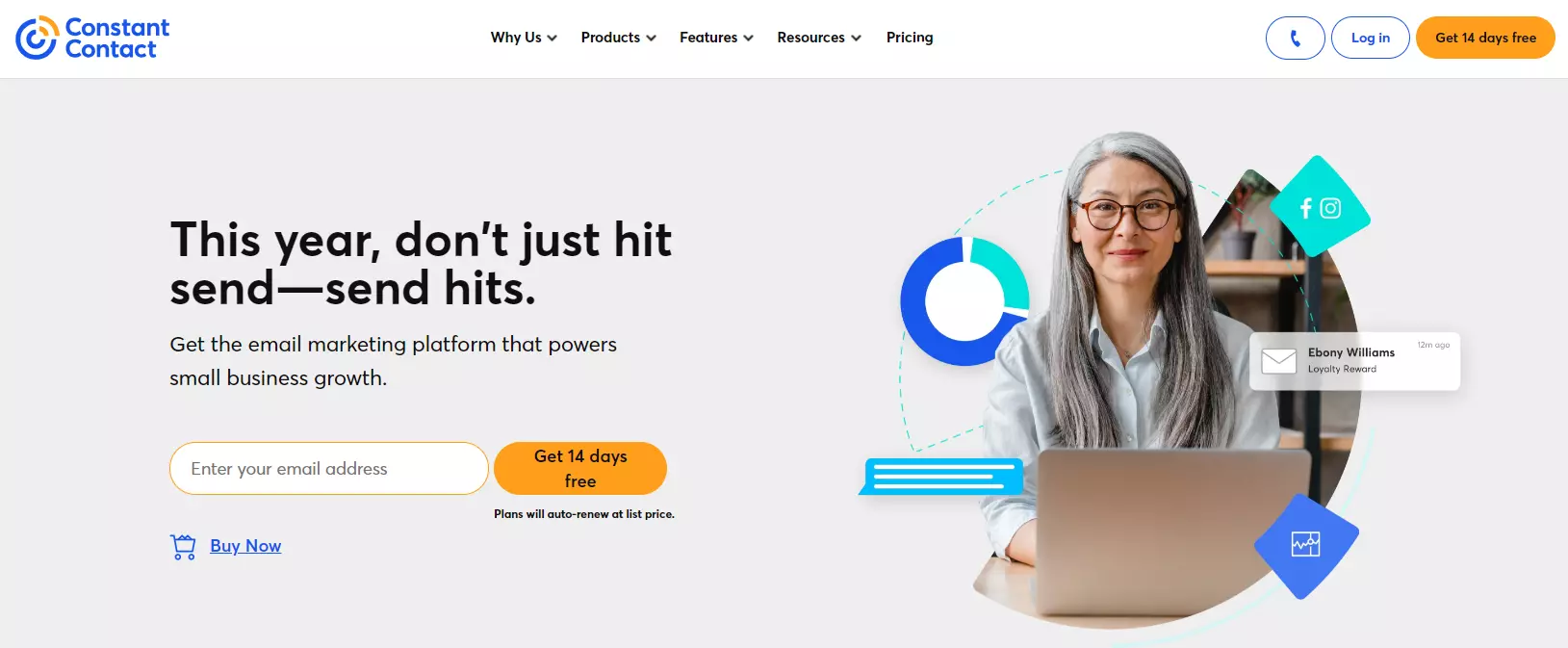
A robust email marketing tool is pivotal to any company's effective marketing strategy. With platforms like Constant Contact and Mailchimp, you can build email lists and execute engaging campaigns, guiding contacts through your marketing funnel toward becoming long-term customers.
However, selecting the ideal email marketing software for your business can be challenging.
Let's delve into an in-depth comparison, weighing the pros and cons to discern the differences between Mailchimp and Constant Contact.
What is Mailchimp?

Originating as a bootstrap venture in 2001, Mailchimp has since burgeoned into a service catering to 11 million active customers and an extensive audience of 4 billion users.
While initially recognized as the premier email marketing platform, Mailchimp has undergone expansion in recent years, transforming into a comprehensive marketing platform. It now offers features such as landing pages, automation, social media scheduling, and more.
You can also read our guide on What is Mailchimp for information about this platform.
What is Constant Contact?

Established in 1995, Constant Contact is a renowned marketing tool designed to assist small businesses in formulating effective marketing strategies.
Boasting over 600,000 customers, Constant Contact aids its users in creating websites, online stores, branded email marketing campaigns, and various other marketing endeavors.
Constant Contact vs. Mailchimp: Features Comparison
Selecting the right marketing technology goes beyond merely finding a good deal. Both Constant Contact and Mailchimp offer a plethora of valuable email marketing features.
Let’s go through them one by one.
Email Design
The appearance of your email is the initial impression your audience receives, making it crucial to convey professionalism and brand identity effectively. Both Mailchimp and Constant Contact provide a diverse range of user-friendly drag-and-drop templates. Constant Contact's templates may offer a slightly more intuitive experience for beginners.
While Constant Contact boasts a greater variety of templates, Mailchimp shines in customization options, allowing for a personalized touch to emails. Many reviewers praise Mailchimp's sleek and modern templates. Additionally, Mailchimp offers a helpful feature that previews how emails will appear on over 30 different clients, providing valuable insight into the recipient's viewing experience.
Registration Forms
The effectiveness of your email subscriber signup form is pivotal to building and maintaining your email list. Mailchimp's drag-and-drop editor and customizable fields offer excellent flexibility for creating signup forms. In contrast, Constant Contact's forms, while allowing color and font changes, offer less overall customization.
A unique feature of Constant Contact is its registration form QR codes, enabling users to join email lists quickly by scanning the code with their phone. However, unless particularly fond of the QR code feature, Mailchimp holds an advantage in this aspect.
A/B Testing
A/B testing, or split testing, plays a vital role in optimizing marketing campaigns by determining the most effective email version. Mailchimp allows testing up to three variations, enabling comparison of subject lines or email content. In contrast, Constant Contact limits A/B testing to subject lines and restricts this feature to users on the Email Plus plan.
Furthermore, Mailchimp grants users control over the test audience size before sending the winning email version to the full list, offering greater flexibility compared to Constant Contact.
List Management and Segmentation
Constant Contact emerges as the winner in list management and segmentation, excelling in both ease of use and available features. It offers more options for uploading contacts compared to Mailchimp.
Mailchimp's differentiation between groups and segments can often confuse users, making it challenging to navigate. Constant Contact simplifies the process, enabling quick segmentation of lists.
Email Deliverability
Email deliverability is the measure of how successfully emails reach their intended recipients' inboxes. While we hope all emails land where they're supposed to, various factors can hinder this process.
Numerous factors influencing deliverability are under your control rather than solely reliant on your email marketing platform. However, the software you employ can also play a role in ensuring your emails reach their destination.
In March 2021, Constant Contact boasted a deliverability rate of 91.5%, outperforming Mailchimp's 86.9%. Both figures surpass the average deliverability rate of 83%.
Ease of Use
Both Mailchimp and Constant Contact offer user-friendly interfaces suitable for beginners and experienced users alike.
According to user reviews on platforms like G2 and Capterra, Mailchimp edges slightly ahead in ease of use, although both platforms receive commendable ratings across the board.
Conclusion: Constant Contact Vs Mailchimp
When comparing Mailchimp and Constant Contact, each email platform exhibits distinct standout qualities. Selecting your email provider entails determining which advantages align best with your priorities.
Mailchimp proves advantageous over Constant Contact for budget-conscious users, those requiring advanced reporting capabilities, and individuals seeking extensive automation and A/B testing options.
Conversely, if factors such as deliverability rates, user-friendliness, and quality customer service hold significant importance to you, Constant Contact might be a better choice.

